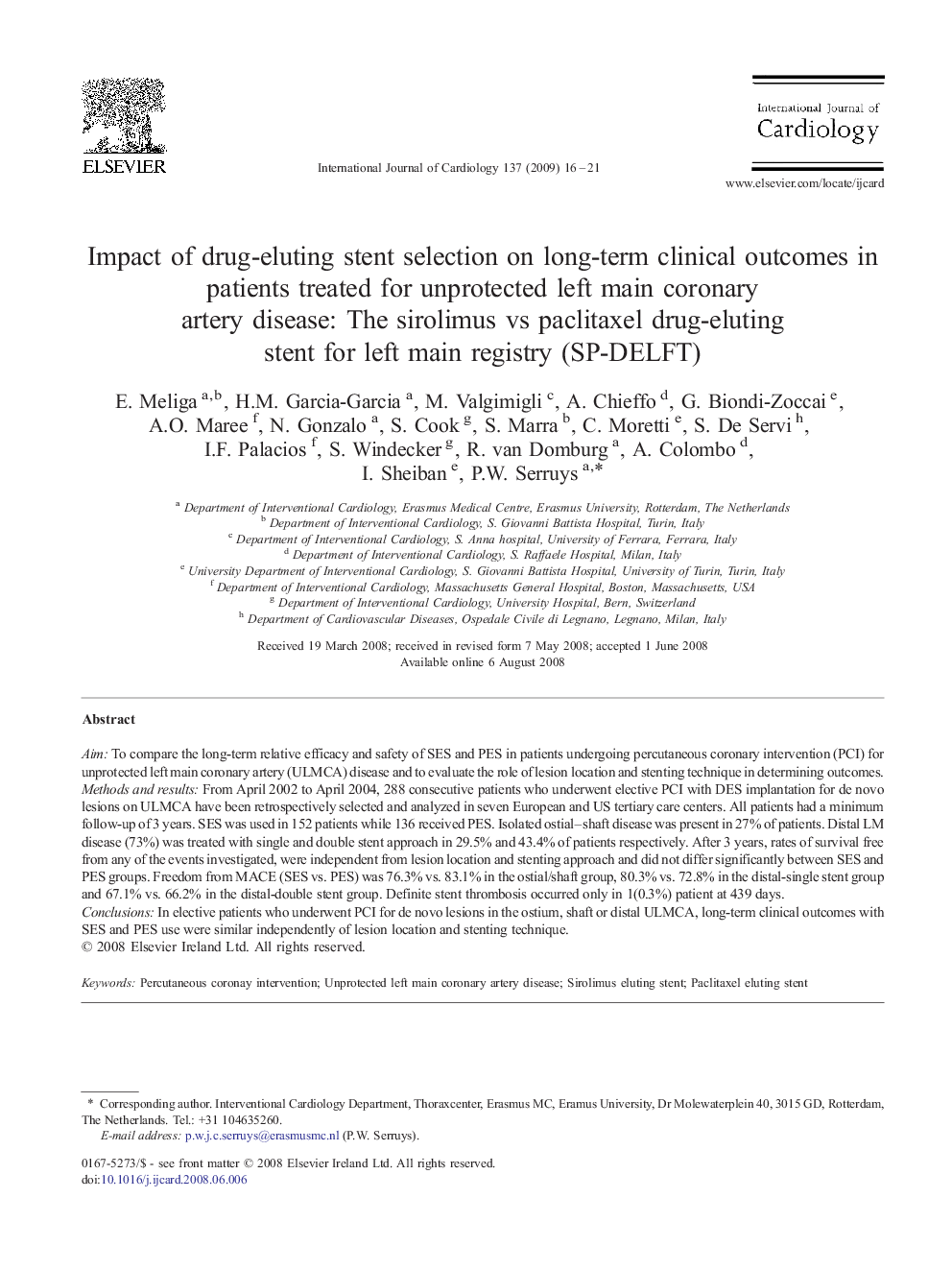| Article ID | Journal | Published Year | Pages | File Type |
|---|---|---|---|---|
| 2932464 | International Journal of Cardiology | 2009 | 6 Pages |
AimTo compare the long-term relative efficacy and safety of SES and PES in patients undergoing percutaneous coronary intervention (PCI) for unprotected left main coronary artery (ULMCA) disease and to evaluate the role of lesion location and stenting technique in determining outcomes.Methods and resultsFrom April 2002 to April 2004, 288 consecutive patients who underwent elective PCI with DES implantation for de novo lesions on ULMCA have been retrospectively selected and analyzed in seven European and US tertiary care centers. All patients had a minimum follow-up of 3 years. SES was used in 152 patients while 136 received PES. Isolated ostial–shaft disease was present in 27% of patients. Distal LM disease (73%) was treated with single and double stent approach in 29.5% and 43.4% of patients respectively. After 3 years, rates of survival free from any of the events investigated, were independent from lesion location and stenting approach and did not differ significantly between SES and PES groups. Freedom from MACE (SES vs. PES) was 76.3% vs. 83.1% in the ostial/shaft group, 80.3% vs. 72.8% in the distal-single stent group and 67.1% vs. 66.2% in the distal-double stent group. Definite stent thrombosis occurred only in 1(0.3%) patient at 439 days.ConclusionsIn elective patients who underwent PCI for de novo lesions in the ostium, shaft or distal ULMCA, long-term clinical outcomes with SES and PES use were similar independently of lesion location and stenting technique.
